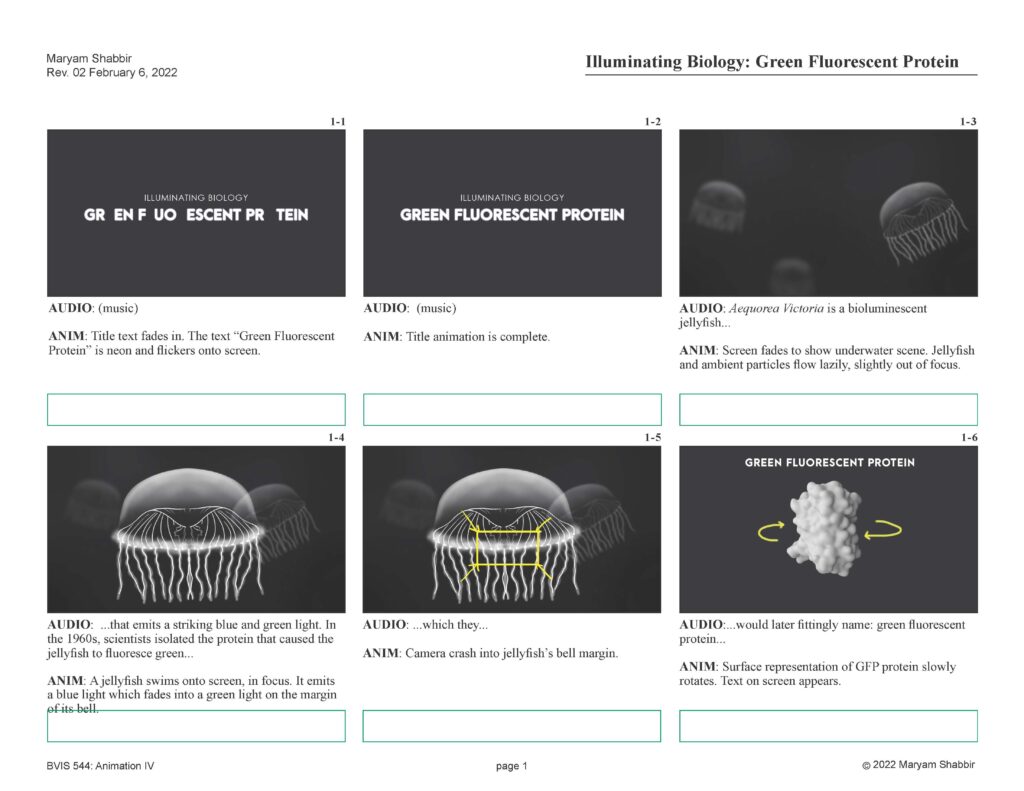3D ANIMATION
GFP: Illuminating Biology
BACKGROUND
AUDIENCE: Undergraduate biology students
SOFTWARE: 3dsMax, Adobe After Effects, Maxon Trapcode and Red Giant Suites, VMD, Zbrush, Blender
CLIENT: Rex Twedt
COMPLETED: April 2022
SUMMARY
Since its discovery, GFP has revolutionized the realm of biological imaging and has become invaluable in studying protein localization, physiological processes, and transgenic expression in vivo. This animation aims to introduce college-level biology students to the discovery and significance of GFP in a stylized and engaging way.
PRE-PRODUCTION
After conducting preliminary research on the discovery and significance of GFP, organizational charts were created to capture important concepts and visual references. This included references on the anatomy of crystal jellyfish, the structure of GFP and chromophore, and other helpful images that conveyed the desired look and feel. I wanted the aesthetic of the animation to reinforce the concept of fluorescence. As a result, I envisioned dark backgrounds, neon text, and bold volumetric lighting to engage the target audience.
With these considerations in mind, I developed a script and storyboard, making note of feedback from peers before moving on to the production stage.
PRODUCTION
I obtained the 3D models of GFP from the Protein Data Bank (PDB) and generated QuickSurf and Ribbon representations using Visual Molecular Dynamics (VMD). 1EMA was used as the primary GFP model, while the chromophore was obtained from 1GFL and aligned with the main model using VMD’s MultiSeq feature.













